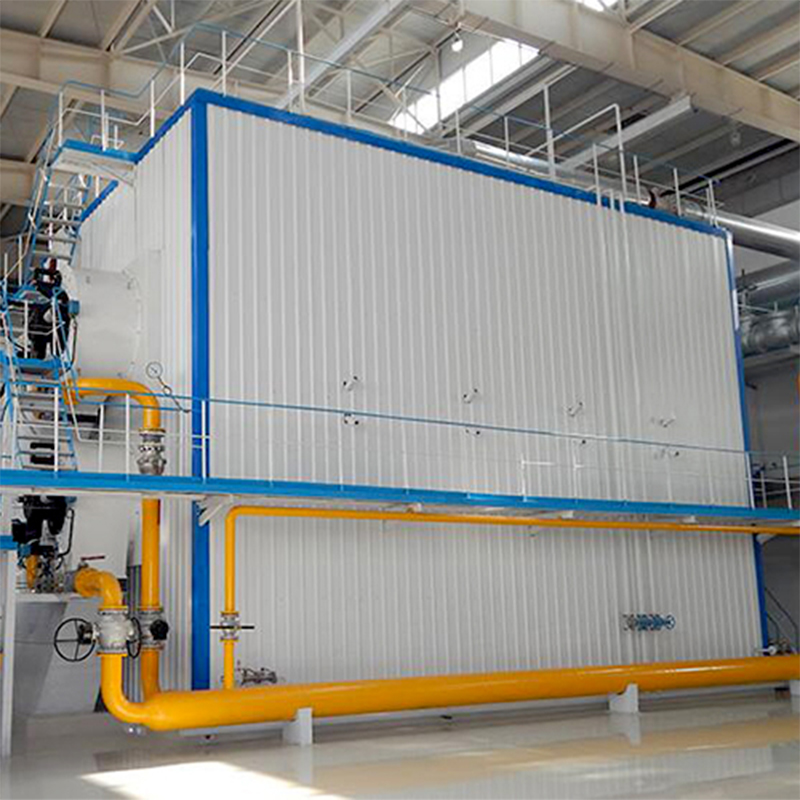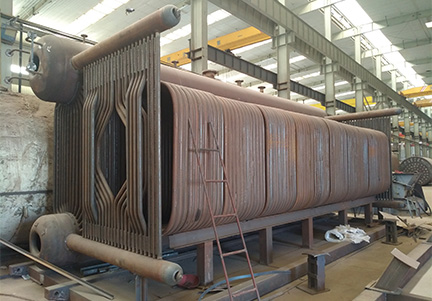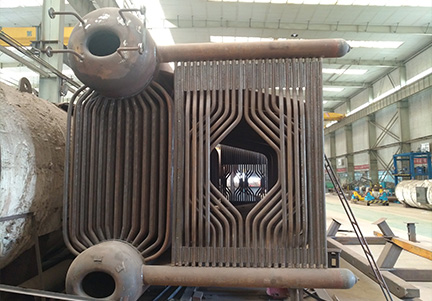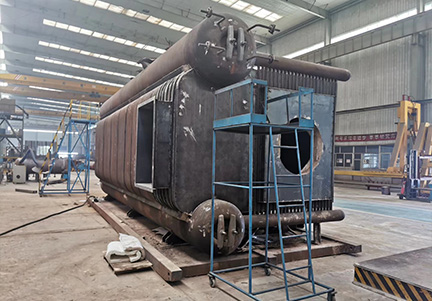Aug . 04, 2025 02:40
Back to list
Top Electric Steam Boiler Manufacturers | AI Efficiency
As sustainability and technological innovation reshape heavy industry, the role of electric steam boiler manufacturers grows ever more crucial. From advanced materials to high-efficiency heat exchange and automated control systems, modern steam boiler solutions like the SZS double drum water tube steam boiler are powering factories, refineries, and utility installations worldwide. This comprehensive guide explores product specification tables, manufacturing flows, technical advantages, real-world applications, and trusted supplier selection criteria—empowering you to choose, customize, and deploy the optimal steam boiler system for your needs.
Industry Overview & Trends: Electric, Gas & Alternative Steam Boilers
- The global industrial steam boiler market is forecasted to exceed $21.8 billion by 2028 (2022: $15B) with a CAGR of 6.3%, driven by decarbonization and digitization trends.[1]
- Demand for electric steam boiler manufacturers is surging due to stricter emission standards (EPA, EU 2030 goals) and operational efficiency requirements.
- While gas steam boiler for sale remains prevalent in capacity-critical sites, electric and water tube steam boilers are gaining traction in sectors prioritizing sustainability and process control.
- Emerging technologies—like IoT-based thermostat for steam boiler and AI-driven maintenance—are revolutionizing uptime and safety.

Technical Comparison: Electric vs Gas vs Water Tube & Fire Tube Steam Boilers
| Parameter | Electric Steam Boiler | Gas Steam Boiler | Water Tube Steam Boiler | Fire Tube Steam Boiler |
|---|---|---|---|---|
| Typical Output Range | 100 kg/h – 30 t/h | 500 kg/h – 100 t/h | 2 – 120 t/h | 0.5 – 25 t/h |
| Thermal Efficiency | 97% – 99% | 83% – 96% | 88% – 96% | 82% – 89% |
| Emission Standards | Zero Emission | NOx, CO, CO₂ regulated | NOx, CO, CO₂ regulated | NOx, CO, CO₂ regulated |
| Heat Exchanger Type | Tubular immersion/coil | Shell or tube-based | Water tube | Fire tube |
| Application Scenarios | Food, pharma, clean rooms, labs | Refineries, textile, HVAC | Chemical, power, steel | Laundry, hospitals, small plants |
SZS Double Drum Water Tube Steam Boiler: Technology, Certification & Process Flow
SZS double drum water tube steam boiler, designed and manufactured by leading electric steam boiler manufacturers, sets industry benchmarks through:
- Premium Material: Drum & tubes constructed from ASTM A335 P11/P22 alloy steel for pressure parts; outer shell in Q345R or stainless steel for corrosion resistance.
- Advanced Fabrication: CNC plasma cutting, submerged arc welding, and post-weld heat treatment ensure mechanical integrity.
- Rigorous Testing: 100% radiography as per ASME/ISO 16528 standards, hydrostatic test at 1.5x design pressure.
- Certifications: ISO 9001, CE, SGS, and local pressure vessel approval (such as TSG certificates for China, PED for EU).
- Industry lifespan of SZS water tube units: 25–35 years with periodic NDT and overhauls.
- Manufacturers maintain in-house labs for material spectroscopy and mechanical testing to guarantee batch consistency.
- Key applicable industries: petrochemical, metallurgy, pharmaceuticals, food and beverage processing, municipal heating plants, power generation.

Major Electric Steam Boiler Manufacturers: Global Players Comparison
| Manufacturer | Key Product Models | Certifications | Annual Output (Units) | Main Market/Region | Warranty |
|---|---|---|---|---|---|
| Cleaver-Brooks | CBEX-E Electra |
UL, ISO, ASME | 3,600+ | USA, Global | 2 years |
| Miura | QE, MVW, LX | CE, ISO, PED | 4,700+ | Japan, Asia, EU | 2–3 years |
| Sussman Electric | ES, MBA, MBAE, SVS | UL, ISO | 2,000+ | USA, EU | 1–2 years |
| Babcock Wanson | VAP-EL, EPCB, EME | CE, ISO | 1,500+ | EU, ME, Asia | 2 years |
| Yongxing Boiler Group | SZS, WNS electric/water tube | ISO 9001, CE, SGS | 5,100+ | China, Global | 2 years |
Application Scenarios: Industrial Powerhouses & New-Energy Facilities
- SZS double drum water tube steam boiler is the first choice in continuous operation plants (chemical, steel, pharmaceuticals) requiring rapid response and large volume, high-pressure steam—sometimes upward of 100 bar.
- Its robust alloy tubes and steam boiler heat exchanger design maximize heat transfer, reduce scaling risk, and ensure stable output even in variable process loads.
- With integration-ready thermostat for steam boiler support, remote monitoring, and PLC-based sequence controls, these units fit into smart factory 4.0 frameworks.
- Weil McLain EG 40 steam boiler and similar modular models dominate institutional HVAC and mid-sized hospital/education buildings for reliability and easy zoning.
- Wood steam boiler options are typical in off-grid biomass and agriprocessing installations (EU and APAC especially), trading some efficiency for fuel independence.

Real-World Case Study: SZS Double Drum Water Tube in Petrochemical Plant
- Project: 50 t/h SZS double drum water tube steam boiler for ethylene production, Southeast Asia
- Key requirements: 24/7 uptime, minimum 24 bar working pressure, integrated with DCS supervisory system.
- Outcome: After 32,000 operating hours (5+ years), reported average thermal efficiency at plant scale: 95.3% (ISO/EN12952 tested); unplanned downtime < 0.25%/yr; NACE-compliance for corrosion in acid gas exposure.
- Client feedback: “The system’s modularity, robust alloy construction, and advanced water treatment integration have cut our operational costs by 18% compared to previous fire tube units.”
Technical Specifications: SZS Double Drum Water Tube Steam Boiler
| Model | Rated Evaporation (t/h) | Rated Pressure (MPa) | Rated Temperature (°C) | Thermal Efficiency (%) | Drum Material | Fuel Types | Standard Compliance |
|---|---|---|---|---|---|---|---|
| SZS10-1.25-Y/Q | 10 | 1.25 | 194 | 96.5 | Q345R | Gas/Oil, Electric | GB/T16507, ASME |
| SZS20-2.5-Y/Q | 20 | 2.5 | 220 | 97.2 | Q345R + Alloy | Gas/Oil, Electric | ISO, CE, SGS |
| SZS40-2.5-Y/Q | 40 | 2.5 | 220 | 96.8 | Q345R + Alloy | Gas/Oil, Electric | EN12952, ANSI |
| SZS75-3.82-Y/Q | 75 | 3.82 | 450 | 97.0 | SA387Gr.22 | Gas, Electric | ISO, PED |
Thermal Efficiency by Model (%)
Market Distribution by Output (2023)
Typical Service Lifespan (Years) by Boiler Type

Customization & Integration: From Quotation to Commissioning
- Requirement analysis—Evaluate process flow, required output, steam quality, space, and emission limits.
- Design customization— Manufacturers offer tailored drum thickness, heating surface area, insulation materials, burner type (for gas), electric element arrays, automatic water feeders, and PLC/SCADA integration.
- Manufacturing— Order-based production with precise process control, traceable material certificates, and continuous QA/QC as per ISO/ANSI.
- Factory acceptance tests (FAT)— Hydrotest, emission measurement, safety controls, and automation calibration before shipment.
- Installation & commissioning— Certified field engineers; installation as per ASME BPVC Section I or local national codes, followed by performance guarantee testing.
Typical delivery/commissioning cycle: 45–90 days (standard) or 70–150 days (custom large units).
FAQ: Technical Questions about Electric & Water Tube Steam Boilers
Q1: What is the main advantage of a water tube steam boiler over a fire tube boiler?
Water tube boilers operate at higher pressures and capacities (up to 120 t/h) with faster steam generation and enhanced heat transfer. They're ideal for critical industrial/process use, thanks to better scaling and corrosion management.
Q2: Which international standards should I request from electric steam boiler manufacturers for safety and quality?
Reputable suppliers certify their products to ISO 9001, ASME BPVC, CE, PED (EU), or local regulatory codes, such as GB/T16507. Material and weld certifications are also vital.
Q3: How crucial is the steam boiler heat exchanger material?
High-pressure sections must use low carbon alloys (e.g., ASTM A335 P11/P22) to ensure durability, scaling resistance, and heat transfer. In food/pharma, stainless steel (SS316L) is preferred for hygiene.
Q4: How do modern thermostat for steam boiler systems improve efficiency?
Intelligent thermostats regulate load, optimize modulation firing/frequency, integrate real-time data via IoT, and allow remote troubleshooting. This reduces fuel or electricity consumption by up to 10%–15%.
Q5: What routine maintenance and NDT inspections are needed for long lifespan?
Annual ultrasonic thickness scanning, magnetic particle and radiographic weld tests. Feedwater/condensate chemistry control and periodic blowdown to prevent scaling and corrosion. Service intervals: 3–5 years/full overhaul.
Q6: How are weil mclain eg 40 steam boiler and SZS models different in application?
Weil McLain EG 40 is a small/medium residential or institutional fire tube boiler, while SZS models serve large-scale industrial sites with high, continuous steam demands and full automation.
Q7: Do electric steam boiler manufacturers offer remote monitoring and predictive maintenance?
Yes, most leading brands provide IoT/PLC modules for live parameter monitoring, predictive fault analytics, and integration with enterprise MES/supervisory systems. Check for cloud platform compatibility.
Why Trust Leading Electric Steam Boiler Manufacturers?
- EEAT-Driven Service: At every stage—design, production, after-sales—you benefit from experienced engineers, global certificates, and traceable, transparent QA.
- Warranty & Support: 12–24 months guarantee; lifetime tech support (remote & on-site); rapid parts supply; operator training.
- Certified Partners: References include Fortune 500 companies, national utility projects, and OEM tie-ups with leading industrial brands. (References on request.)
- Third-Party Validation: Annual product testing by SGS/TÜV/lab; published performance results accessible upon request.
- Environmental & Regulatory Compliance: All systems meet or exceed global eco-efficiency standards (such as EU EcoDesign, EPA Clean Air protocols).
References & Further Reading
[1] Steam Boiler Market Report 2023–2028, MarketsandMarkets
[2] SZS Double Drum Water Tube Steam Boiler Product Page, Yongxing Boiler Group
[3] Cleaver-Brooks Electric Steam Boiler Range
[4] Durability of Alloy Steels for Steam Boiler Construction, ResearchGate
[5] Industry Users Forum – Steam Boiler Materials, Installation Experiences
[6] ScienceDirect: Thermodynamic Analysis of Water Tube Boilers
[1] Steam Boiler Market Report 2023–2028, MarketsandMarkets
[2] SZS Double Drum Water Tube Steam Boiler Product Page, Yongxing Boiler Group
[3] Cleaver-Brooks Electric Steam Boiler Range
[4] Durability of Alloy Steels for Steam Boiler Construction, ResearchGate
[5] Industry Users Forum – Steam Boiler Materials, Installation Experiences
[6] ScienceDirect: Thermodynamic Analysis of Water Tube Boilers
Next:
This is the last article
Latest news
-
Top Electric Steam Boiler Manufacturers | AI EfficiencyNewsAug.04,2025
-
Efficient Thermal Oil Boilers with AI Optimization | Superior PerformanceNewsAug.03,2025
-
High-Efficiency OEM Steam Boilers w/GPT-4-TurboNewsAug.02,2025
-
Advanced Electric Steam Boiler Manufacturers | GPT-4 Turbo AINewsAug.01,2025
-
Custom Steam Boilers Manufacturer | AI-Enhanced EfficiencyNewsJul.31,2025
-
Top Electric Steam Boiler Makers | AI-OptimizedNewsJul.31,2025

